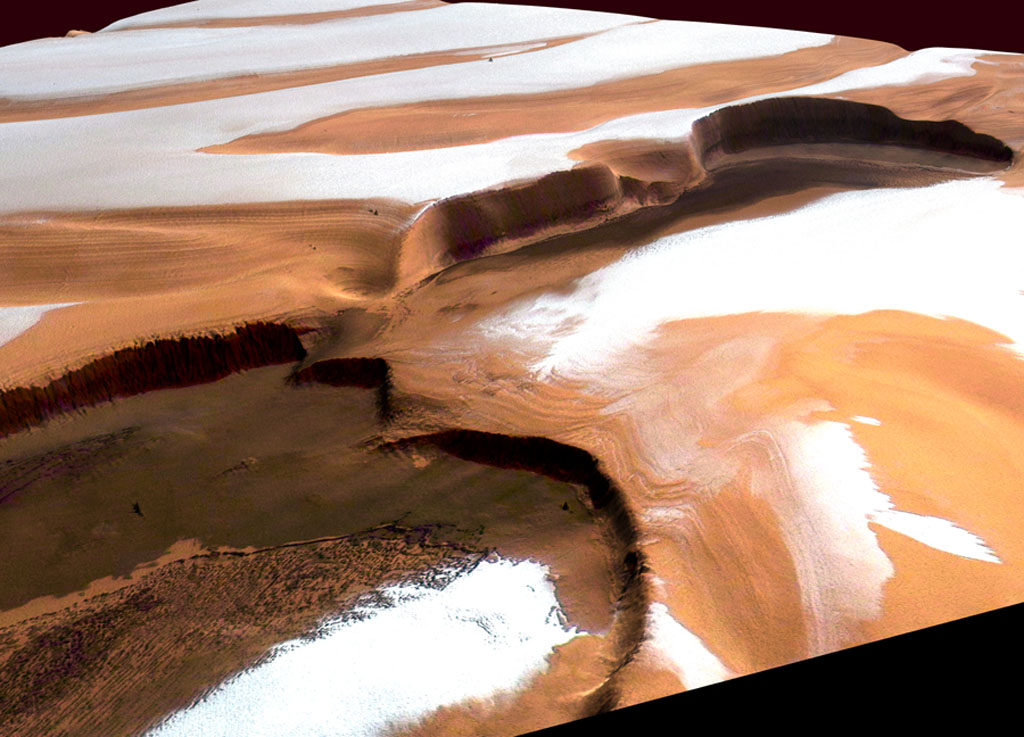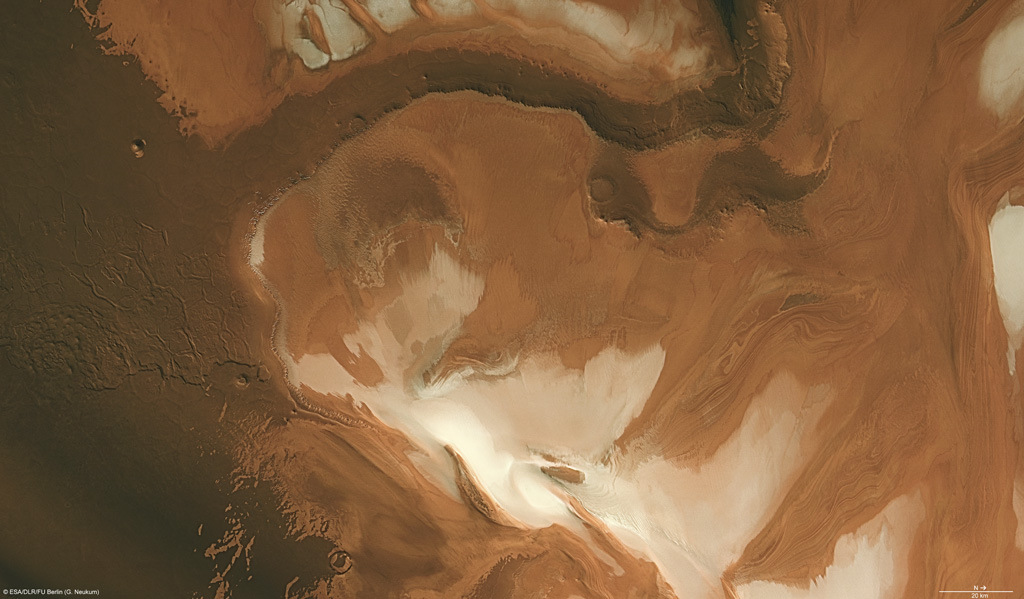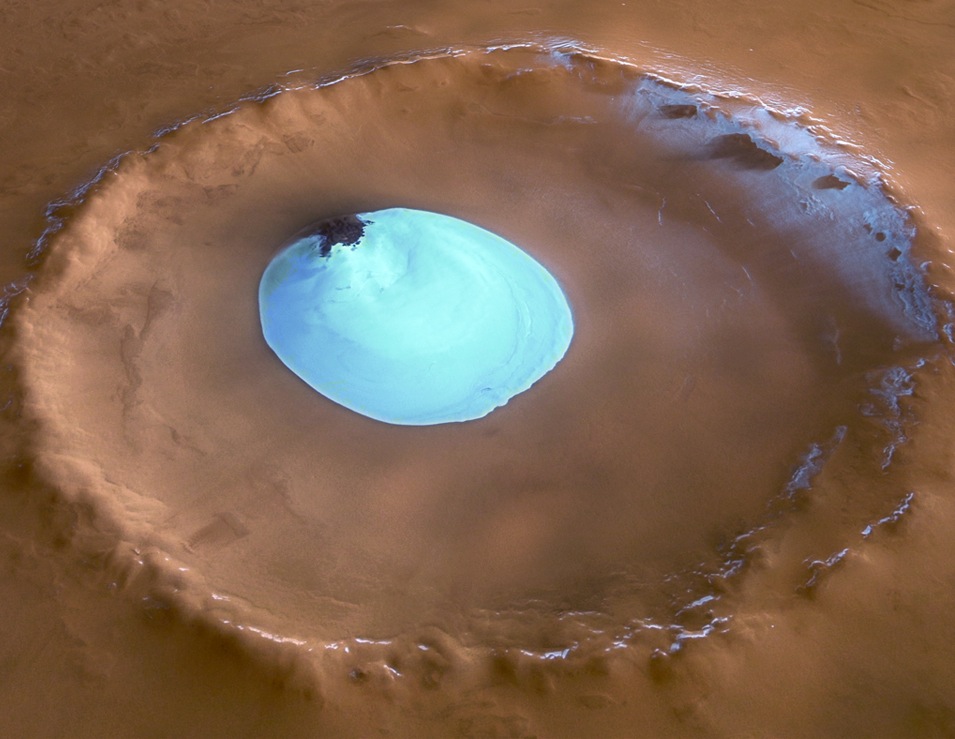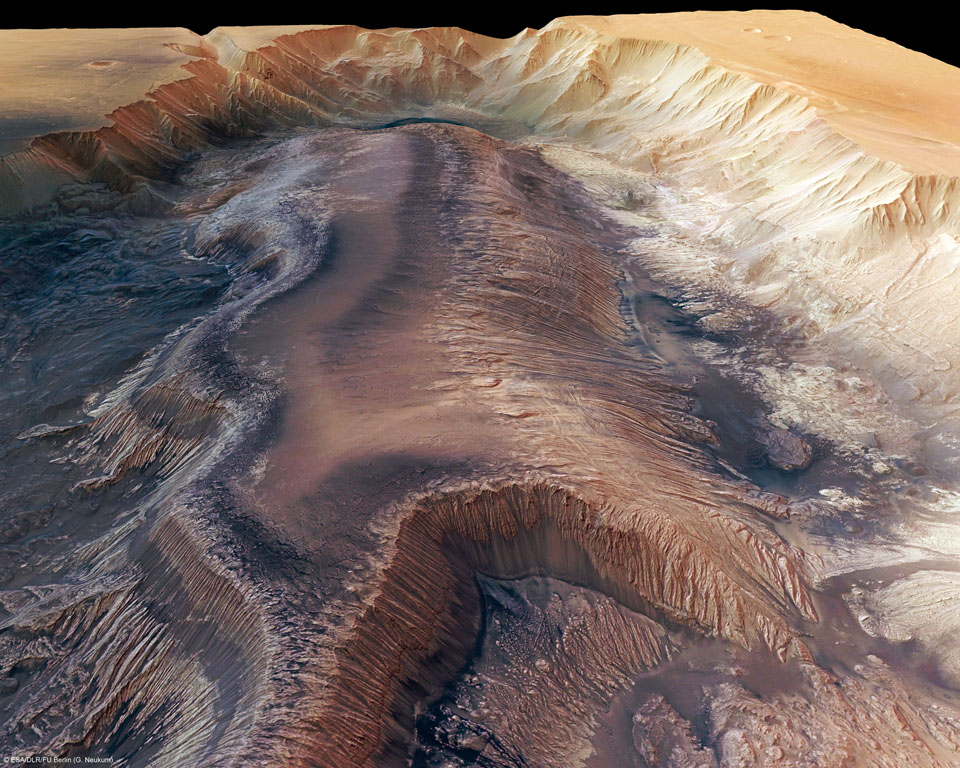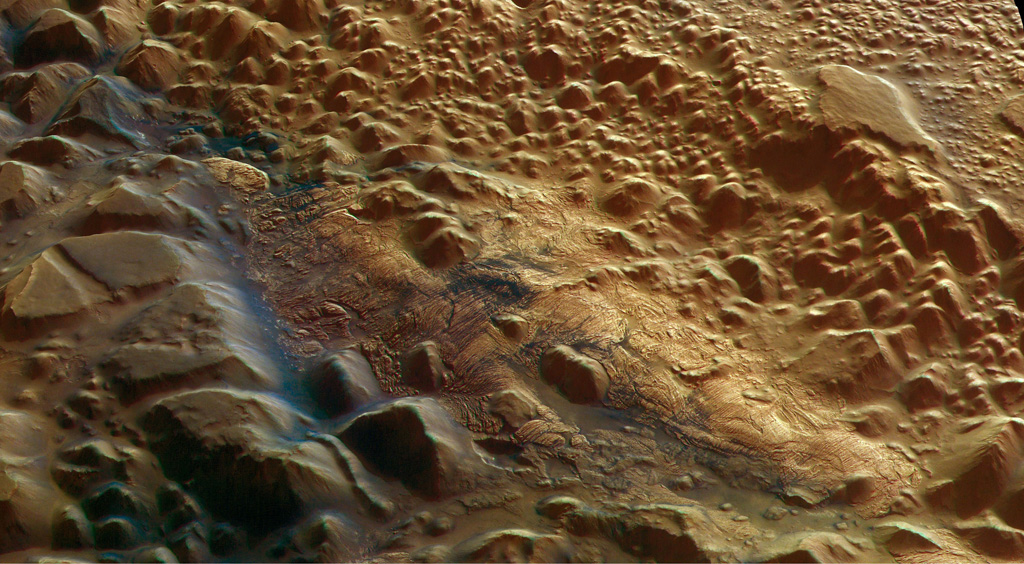|
The Enigmas on Mars - E01 ESA Mars Express Images |
|
|
.. Ice and Dust at Martian North Pole This image, taken by the High Resolution Stereo Camera (HRSC) on ESA’s Mars Express spacecraft, was released as one of a set in 2005 for a conference about water, ice, glaciers and volcanism on Mars. It shows the martian north polar ice cap with layers of water ice and dust for the first time in perspective view. Here we see cliffs that are almost two kilometres high, and the dark material in the caldera-like structures and dune fields could be volcanic ash. Mars Express also saw fields of volcanic cones, some up to 600 metres high. They appear to indicate very recent volcanic activity. The question remains, is it ongoing activity? SOURCE: ESA Photojournal For more information:
|
|
|
. Polar Water-ice Caps on Mars The polar ice caps on Mars contain the Red Planet’s the largest water reservoirs. Recent data from ESA’s Mars Express spacecraft (from the Mars Advanced Radar for Subsurface and Ionosphere Sounder) has revealed that both polar ice caps are 3.5 km thick. The deep water-ice polar cap is usually covered by a thin layer of carbon dioxide ice. During the warmer summer months, most of the carbon dioxide ice sublimates directly to vapour and escapes into the atmosphere, leaving behind the harder water-ice layers. Mars Express took this picture of the snow-covered Rupes Tenuis region at the edge of the martian north polar cap on 29 July 2008. The image covers an area of about 44 000 sq. km, almost the size of the Netherlands. SOURCE: ESA Photojournal For more information:
|
|
|
. Ice Lake Found on Mars This is a giant patch of frozen water inside an unnamed impact crater on Mars. The existence of this water-ice patch on Mars makes life a more likely possibility and raises the prospect that past or present life will one day be detected. The crater with ice disc is on the Vastitas Borealis, a broad plain that covers much of Mars’s far northern latitudes. The crater is 35 km wide, with a maximum depth of about 2 km. The image was taken by the High Resolution Stereo Camera on ESA’s Mars Express. Scientists believe the water-ice is present all year round because the temperature and pressure are not sufficient to allow it to change states and vaporise into the atmosphere. It is not frozen carbon dioxide, because this type of ice had already disappeared from the north polar cap by the time this image was taken. SOURCE: ESA Photojournal For more information:
|
|
|
. Hebes Chasma, a Trough in the Grand Canyon of Mars Hebes Chasma is a huge trough, almost 8 km deep, in Valles Marineris, the 3000-km long ‘Grand Canyon of Mars’, where water is believed to have flowed. ESA’s Mars Express has provided new pictorial clues to its history. A flat-topped mountain in the centre of Hebes Chasma reaches 8000 m above the valley floor and rises to almost the same height as the surrounding plain. The mountain is made up of numerous rock layers stacked on top of each other, perhaps made out of remnants of an older plateau, sediments from a lake, wind-blown sediments or volcanic rocks. The rock layers have been exposed by erosion. Mars Express has revealed evidence of water-bearing minerals such as gypsum in some areas of Hebes Chasma, proof that significant quantities of water once existed there. SOURCE: ESA Photojournal For more information:
|
|
|
.. Strange Deposits Seen on Mars Iani Chaos is an area of Mars where ‘Light Toned Deposits’, or LTDs, have been seen (the grey colouration in this image from ESA’s Mars Express spacecraft). LTDs were discovered by the Viking spacecraft in the 1970s. They closely resemble water sediments on Earth and are some of the most mysterious features on Mars. Causes for their origin remain unknown. Different mechanisms, including volcanic processes, have been proposed for their formation. Now, based on ESA Mars Express data, scientists propose that these sediments are younger than originally believed and may have been deposited by springs of groundwater that burst on to the surface. If the deposits are relatively young and associated with water, they may also have sheltered primitive life forms as the planet started drying up in more recent times. SOURCE: ESA Photojournal For more information:
|
|
| FAIR USE NOTICE: This page contains copyrighted material the use of which has not been specifically authorized by the copyright owner. Pegasus Research Consortium distributes this material without profit to those who have expressed a prior interest in receiving the included information for research and educational purposes. We believe this constitutes a fair use of any such copyrighted material as provided for in 17 U.S.C § 107. If you wish to use copyrighted material from this site for purposes of your own that go beyond fair use, you must obtain permission from the copyright owner. | |
|
|
